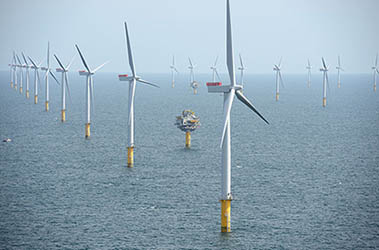Introduction
In the previous lessons in Unit 5, you have learned about a few of the alternative energy sources that can help reduce our dependency on fossil fuels. You have learned that there are pros and cons to each of these alternative sources of energy.
In this lesson, you will learn about the last of the alternative, renewable sources of energy: hydroelectric energy and wind energy. You will learn how each can harvest energy from natural resources and what advantages and disadvantages that each source has. As mentioned earlier, no single source of alternative energy is the answer. As of now, a combination of these different energy sources is probably the best answer for the environment and society.

Sheringham Shoal Offshore Wind Farm, England. View larger version.
Image courtesy of Havvindparken Sheringham Shoal.
This file is licensed under the Creative Commons Attribution 2.0 Generic license.
| Lesson Objectives |
|
Following successful completion of this lesson, students will be able to...
Enduring Understanding:
The above objectives correspond with the Alabama Course of Study: Environmental Science 1 This lesson incorporates the following Literacy Standards: R1, R2, R3, R4, R5, R6, R7, R10, W1, W2, W3, W4, W8, W9, and W10 |
 |